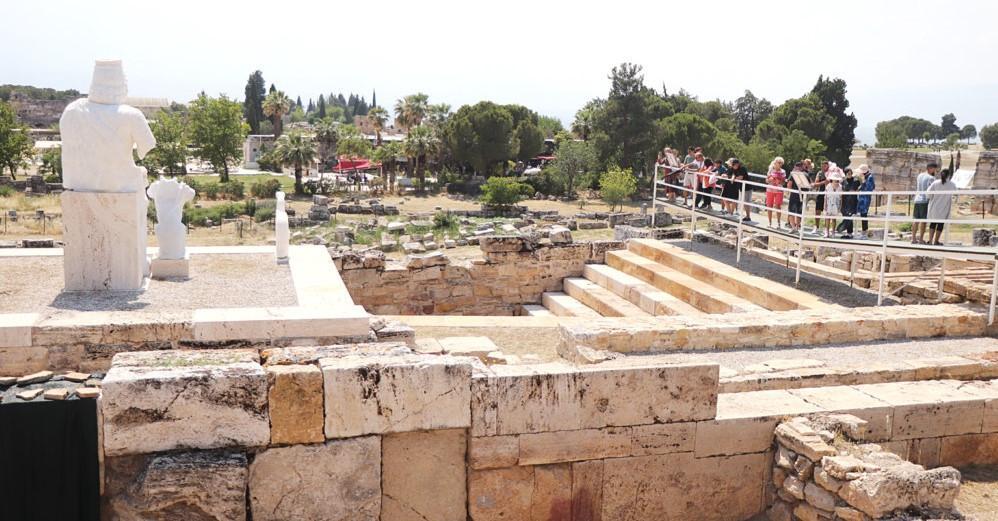
The Gate of Hell, (Plutonium), which was unearthed in 2013 by the Italian excavation team in Pamukkale, one of Türkiye’s UNESCO World Cultural Heritage sites, has been opened to visitors. Plutonium, which is called the “gateway to the land of the dead” in ancient sources, began hosting hundreds of local and foreign tourists on the very first day.
Located in the ancient city of Hierapolis in Pamukkale, one of the most important cultural heritages of Türkiye, Plutonium was opened to short-term visits in 2018 during the ongoing restoration work, but later, visitors were prohibited again.
The Gate of Hell is set to be officially opened to visitors in September.
Thanks to modern science, the mystery of the gate has been solved during the examinations there. It was reported that the animals, sent to the cave during the sacred ceremonies held in the ancient times at the Gate of Hell, died due to the effect of carbon dioxide gas.
In the ancient city of Hierapolis, which was founded by the King of Pergamon Eumenes II in the second century B.C. and means “holy city,” an Italian excavation team, led by Professor Francesco D’Andria discovered a structure that sheds light on the region’s past.
D’Andria and his team found the Gate of Hell, which is considered the “gateway to the land of the dead” in the ancient world, and one of the original sources of thermal waters that formed the Pamukkale travertine pools.
At the Gate of Hell, especially the fascinating statue of Hades, which has been restored in accordance with its original form, and the three-headed guard dog of Hell, Kerberos, attract the attention of tourists.
Professional Tour Guide Bekir Yavuz, who stated that tourists are interested in the site, said, “Tourists come here every day from many different parts of Türkiye. We accompany them. The newly opened gate of hell, which has been closed for a long time, is a place known as the gateway for the dead. Many tourists come here today because of the opening. It has a very different structure. Because poisonous gas comes from underground, tourists learn about this and ask us about it.”
The “Plutonium” in Latin and “Ploutonion” in Greek, was believed to be the gateway to the underworld in Greco-Roman mythology. In the structure that the Greek geographer Strabo included in his Ancient Anatolian Geography works, the animals that were to be sacrificed to Pluto, were brought to the temple and died at the Gate of Hell due to toxic gases.
It is believed that Plutonium, which is believed to have survived until the fourth century, was destroyed in order to prevent the superstition coming from paganism after Christianity was adopted, and after a while, it was completely destroyed in the sixth century during earthquakes that occurred in the city.
This Plutonium in Hierapolis has a very important archaeological value. This latest discovery proves the accuracy of the information in ancient literary and historical sources. The toxic gas from the thermal springs here still kills exposed small animals and birds. A special mechanism is set up to prevent visitors from being affected by the gas, which also makes excavations very difficult.